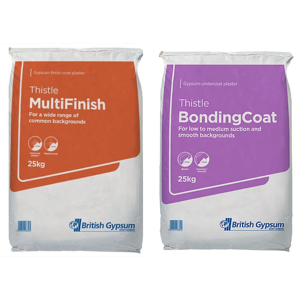Bonding and skimming Method Statement

This method statement for bonding and skimming is available as an instant download.
At the top of the first page, you can enter your company name and project details, and at the bottom, you can sign, print, and date it.
It couldn’t be easier. Once you’ve entered your details, you’re good to go.
You can customise the document to your company and needs by inserting your company name, logo, contract details, site address, etc.
The method statement becomes part of your branded H&S package.
In the realm of construction, the terms "bonding" and "skimming" denote distinct yet essential plastering techniques that serve different purposes in wall preparation and finishing.
Bonding is the process of applying a robust plaster base coat, which is pivotal in establishing a firm and textured foundation on surfaces such as brick, concrete, or even stone. This initial layer, often referred to as the bonding coat, is typically formulated to provide strong adhesion, ensuring that subsequent layers, such as the finishing coat, properly adhere to the surface. The bonding coat is thicker and is designed to fill in imperfections, providing a stable surface for further treatment. It is particularly useful in situations where the underlying substrate is uneven or porous, as it allows for a more effective and durable finish.
Conversely, skimming involves applying a very thin layer of plaster, known as the "skim coat," over an existing base coat. This technique is employed to create a smooth, even surface that is aesthetically pleasing and ready for painting or wallpapering. The skim coat is generally applied using a trowel and requires skill to achieve a flawless finish, as it aims to conceal any minor imperfections left by the bonding coat. Skimming is particularly valuable in renovation projects where existing walls may have flaws, as it provides a quick and efficient way to revitalise the appearance of the space without the need for extensive wall reconstruction.
The method statement is:
- Recognised by local authorities
- Recognised by principal contractors
- Suitable for CDM sites
- Approved by H&S managers
It increases your chance of winning tenders and has been written by trained health and safety professionals.
If the method statement needs altering to include an additional task, such as:
“Ensure you sign and date the site register located in the welfare facilities before commencing work”
It can easily be added as the document comes in Word™, not PDF.
Once you buy and download this document, it’s yours for life to use repeatedly.
We’ve done the hard work for you, allowing you to give people confidence in you, your company, your products and services.
The scope of work that this method statement covers includes:
- Start of works
- Preparing and bonding
- Finishing plaster
- Finishing
Why not browse the HSEDocs catalogue of method statements, risk assessments, COSHH assessments, or industry-specific packages?
And for safety training relevant to your job, visit our online training courses.
GET THIS DOCUMENT
£8.99+VAT
- Available in Word™
- Fully customisable
- Add your Company Logo
- UK & EU Compliant

 CART
CART 